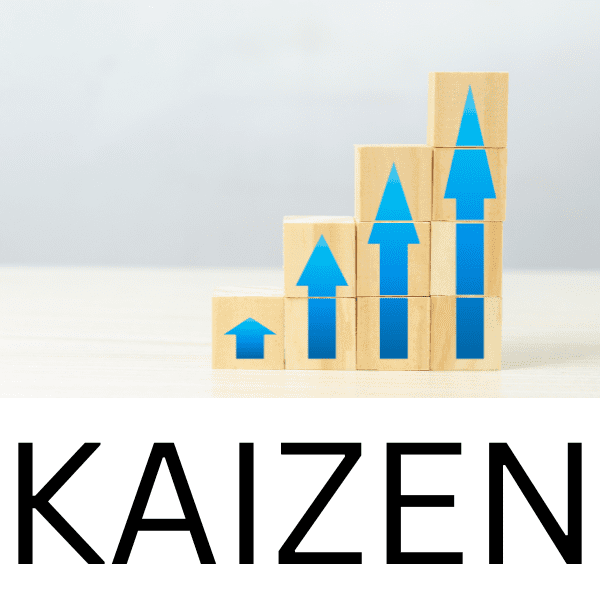
In today’s hyper-competitive landscape, understanding your customers’ needs and desires throughout their Customer Journey is no longer a luxury, it’s a necessity.
But how do you truly hear what your customers are saying? Enter the Voice of the Customer (VOC) – a powerful tool that captures Customer Feedback and translates it into actionable insights that can improve Customer Satisfaction and the overall Customer Experience (CX).
By leveraging VOC programs, businesses can gain a deeper understanding of their customers’ wants and needs at every touchpoint, ultimately leading to a more loyal and satisfied customer base.
Contents
ToggleVoice of the Customer?
The Voice of the Customer (VOC) is a goldmine of insights, offering a nuanced understanding of how your customers perceive your business. It’s not just about glowing testimonials.
VOC encompasses the entire spectrum of customer feedback, from enthusiastic praise and constructive criticism to neutral observations. This valuable information flows in through various channels, solicited and unsolicited.
Structured Feedback Channels:
- Surveys and Satisfaction Ratings: These are direct lines to gather VOC. Carefully crafted surveys can target specific areas or offer open-ended questions to elicit detailed customer experiences. Satisfaction ratings provide a quick pulse check on overall sentiment.
Unfiltered Customer Opinions:
Online Reviews:
Product pages, app stores, and social media platforms are treasure troves of unfiltered customer opinions. Here, you’ll find honest assessments of your offerings, highlighting both strengths and weaknessesCustomer Support Interactions: Every interaction with your support team, be it via calls, emails, or chat conversations, is an opportunity to glean valuable insights. These exchanges often highlight customer pain points and areas where your product or service can be improved.
The Power of Casual Conversations:
Don’t underestimate the importance of casual conversations with customers! These informal interactions can reveal a wealth of information about their likes, dislikes, and overall brand experience. By simply striking up a conversation, you can uncover hidden gems of feedback that might not surface through formal channels.
The VOC Advantage: A 360-Degree Customer View
By capturing and analyzing VOC from all these sources, you gain a comprehensive 360-degree view of your customers’ needs and expectations. This holistic understanding empowers you to make data-driven decisions that improve customer satisfaction, product development, and ultimately, your bottom line.
In essence, VOC is about truly listening to your customers. By leveraging this powerful tool, you can build stronger customer relationships, foster loyalty, and ensure your business remains aligned with the ever-evolving needs of your target audience.
Why Should You Listen to the Voice of the customer?
Actively listening to the Voice of the Customer isn’t just a nice-to-have; it’s a critical weapon in the fight against customer churn and a key driver of customer loyalty and retention. Here’s how VOC empowers your organization to thrive:
Innovation Engine Fueled by Customer Insights:
VOC acts as a compass, guiding your innovation efforts. By listening to customer feedback, you gain a crystal-clear understanding of what resonates with them. This unveils opportunities and unmet needs, fueling the development of groundbreaking products and services that truly address their desires. No more guessing games – VOC ensures your innovation hits the bullseye, ultimately reducing churn and boosting customer loyalty.Crafting Exceptional Customer Journeys with VOC Data:
Imagine being able to anticipate customer roadblocks before they even occur! VOC empowers you to do just that. By understanding customer pain points and frustrations through their feedback, you can pinpoint areas where the customer journey needs improvement. This allows you to proactively address issues, streamline processes, and create a frictionless experience that fosters customer delight and loyalty. Customer satisfaction, measured tools like Net Promoter Score (NPS), soars as a result, leading to a significant decrease in churn and a more customer-centric organization.Data-Driven Decisions for Superior Results and Reduced Churn:
Intuition is great, but data is king. VOC provides a treasure trove of valuable customer data that can inform strategic decisions across every facet of your organization. Marketing campaigns can be laser-targeted to resonate with customer preferences. Product development teams gain insights to create offerings that truly solve customer problems. Every decision can be backed by the power of customer data analysis, leading to superior results, a competitive edge, and ultimately, customer success.
In essence, VOC transforms your business from operating in a vacuum to being in perfect sync with your customer base. It’s the key to unlocking innovation, crafting exceptional experiences, and making data-driven decisions that propel your business towards long-term success. So, listen closely to the Voice of the Customer – it’s the secret weapon waiting to be unleashed to combat churn and cultivate a loyal customer base!
How Can You Capture the Voice of the Customer?
There are numerous ways to capture the VOC, each with its own advantages and reaching different parts of your customer base:
Formal Surveys:
Structured surveys provide quantitative data that can be easily analyzed. This allows you to gather a large volume of feedback from a broad range of customers. Multiple-choice questions and Likert scales make it simple for customers to respond, and the data can be statistically analyzed to identify trends and measure changes over time. However, formal surveys may not capture the nuances of customer experiences or delve into the “why” behind their responses.Social Media Listening & Customer Reviews:
Monitor online conversations on platforms like Twitter, Facebook, and industry forums to understand customer sentiment and identify emerging trends (Social media monitoring). Additionally, analyze online customer reviews on platforms and your own website to gain insights into customer experiences. This method allows you to capture real-time feedback and unprompted opinions, offering a window into unfiltered customer experiences. Social listening is a great way to gauge brand perception and identify areas where customer sentiment might be negative. However, it can be challenging to isolate specific demographics or verify the authenticity of online voices.Customer Support Interactions & Live Chat:
Analyze service tickets, call recordings, and live chat conversations to identify recurring issues and areas for improvement. The customer support team is on the front line of the customer journey, and their interactions provide valuable insights into customer pain points and frustrations. By analyzing these interactions, you can identify patterns and trends that might not be readily apparent through other methods. However, this data may be skewed towards customers who have already encountered problems, and it may not provide a holistic view of the customer experience.Customer Advisory Council & Focus Groups:
For deeper qualitative data, consider forming a customer advisory council comprised of loyal customers who can provide ongoing feedback and insights. Additionally, conduct focus groups with targeted customer segments to delve into specific experiences and gather detailed feedback. This method allows you to gain a richer understanding of customer motivations and behaviors, uncover the “why” behind customer actions, and identify opportunities for improvement specific to different customer groups. However, conducting in-depth focus groups and managing a customer advisory council can be time-consuming and require ongoing engagement.Mystery Shopping Programs (Pay-as-you-go options available):
Gain a unique perspective on the customer experience by employing mystery shoppers to evaluate your products, services, and customer interactions. Mystery shopping programs can be particularly valuable for businesses with a pay-as-you-go pricing model, where understanding the customer journey at every touchpoint is crucial. However, this method can be expensive depending on the scope of the program.
By using a combination of these VOC capture methods, you can gain a comprehensive understanding of your customers’ needs and wants, from broad trends to individual experiences. This allows you to tailor your approach to different customer segments and continuously improve the customer journey across all touchpoints.
How Can You Turn the Voice of the Customer into Action?
Collecting valuable VOC data is just the first step. The true magic happens when you transform that data into actionable insights that drive positive change. Here’s how to bridge the gap:
Untangling the Feedback Web: Analysis and Prioritization
Imagine a room full of conversations – that’s essentially what your VOC data is like. To make sense of it all, data analysis tools become your secret weapon. These tools help you categorize feedback by theme, sentiment, and source. This allows you to identify recurring issues raised through Social media monitoring, live chat interactions, focus groups, customer support tickets, and feedback from customer-facing employees. By analyzing the data from all these sources, you can understand the emotional tone of the feedback (sentiment analysis), pinpoint which channels provide the most valuable insights, and identify recurring issues impacting customer satisfaction.
With your data categorized, prioritization is key. Not all feedback is created equal. Some issues may be widespread and have a significant impact on customer satisfaction, while others might be isolated incidents. By analyzing the volume and severity of the feedback, you can prioritize the most pressing concerns that require immediate attention.
From Insights to Action: Crafting Action Plans
VOC data is a treasure map leading to improvement opportunities. Now it’s time to translate insights into action! Develop specific plans to address the prioritized customer concerns. This may involve anything from streamlining a complex checkout process identified through customer support tickets to developing a knowledge base to address frequently encountered issues raised during live chat conversations.
Action plans should be SMART:
- Specific: Clearly define the issue being addressed and the desired outcome.
- Measurable: Establish metrics to track progress and the impact of the implemented changes.
- Attainable: Set realistic goals that can be achieved with the available resources.
- Relevant: Ensure the action plan directly addresses a customer concern.
- Time-bound: Set a clear timeframe for implementing and evaluating the plan.
Closing the Loop: Communication is Key
Your customers took the time to share their feedback – show them you’re listening! Respond to their comments and suggestions, acknowledging their concerns and outlining the steps you’re taking to address them. This demonstrates transparency and builds trust with your customer base.
Furthermore, consider sharing success stories. Let your customers know how their feedback from social media, live chat, focus groups, and other channels has led to positive changes within your organization. This reinforces the value of their voice and encourages continued engagement.
By following these steps, you can transform VOC data from a static collection of information into a dynamic roadmap for business improvement. Remember, VOC is an ongoing conversation. Continuously collect, analyze, and act on customer feedback to ensure your business stays aligned with their evolving needs and expectations. This ensures you’re constantly optimizing the customer journey across all touchpoints.
Conclusion:
The Voice of the Customer (VOC) is more than just a buzzword; it’s a strategic imperative for sustainable business growth. By actively listening to your customers and transforming their feedback into actionable insights, you unlock a wealth of benefits that can be shared across your entire organization.
- Empowering Stakeholders: VOC data empowers all stakeholders, from product development teams to marketing departments, to make informed decisions based on real customer needs.
- Targeted Customer Engagement: By segmenting your customer base and understanding the unique needs of each (customer segments & buyer personas), VOC insights enable you to tailor your messaging and offerings for maximum impact.
- CRM Alignment: Integrating VOC data with your Customer Relationship Management (CRM) system creates a unified customer view, allowing you to personalize interactions and build stronger relationships.
- Data-Driven Customer Focus: VOC ensures your customer remains at the center of every decision. By leveraging customer data to understand their preferences and pain points, you can continuously refine your approach and elevate the customer experience.
Remember, VOC is an ongoing conversation, not a one-time download. Consistently collect, analyze, and act on customer feedback to stay in perfect sync with their evolving needs. Don’t be afraid to embrace the raw honesty of VOC – it’s the key to continuous improvement and surpassing your competitors.
So, unleash the power of VOC today. Lend an ear to your customers – they’re your secret weapon for business domination. After all, they’re the ones who will propel your brand towards long-term success. Start listening now, and watch your business soar.
Matt Styles
Matt Styles is the founder and voice of The Stylish Leader enterprise. Empowering the next generation of leaders, Matt is focused on challenging minds, inspiring hearts, and helping others achieve their highest potential for success.

- By: Matt Styles
- Date: July 18, 2024
Kaizen: How To Supercharge Your Success
- 3 min read

- By: Matt Styles
- Date: July 15, 2024
Lean Culture 101: How To Organize A Framework That Thrives
- 7 min read

